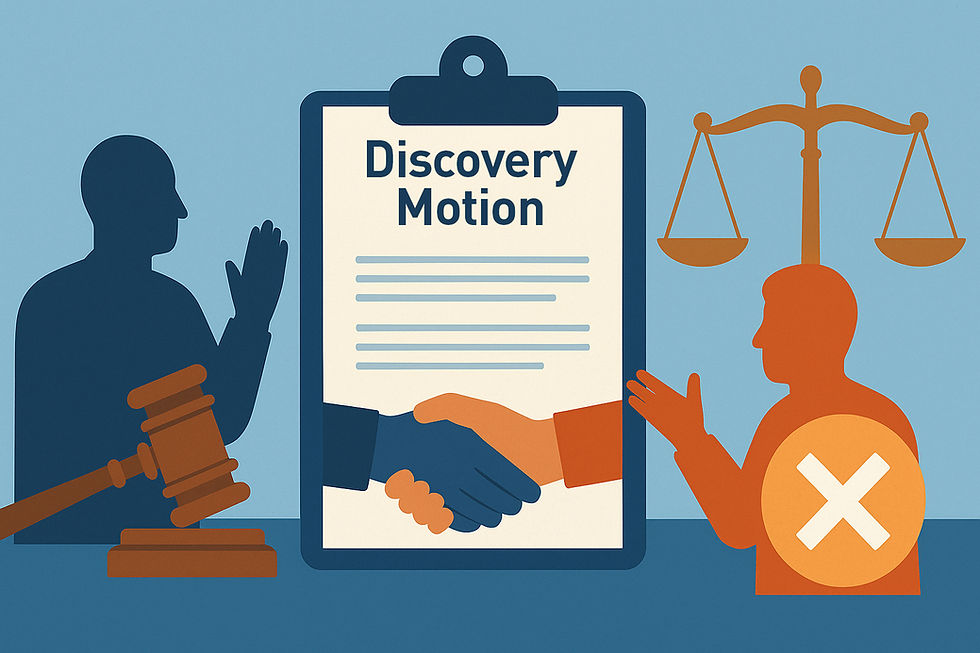What Is a Discovery Motion? Types, Process & Legal Impact in Civil Cases
- Yakup Sari, Esq.

- 7 days ago
- 2 min read

In civil litigation, both parties have a legal duty to share relevant information during the discovery phase. But what happens when one side refuses to cooperate? That’s when a discovery motion comes into play.
A discovery motion is a formal request filed with the court when parties disagree about the exchange of evidence. It’s typically used when one party refuses to provide documents, gives incomplete responses, or objects without proper legal basis. The goal is simple: ensure a fair and transparent discovery process.
How Discovery Motions Work (Step-by-Step)
1. Discovery Phase Begins
Once litigation starts, both sides request information from each other. This can include:
Interrogatories (written questions)
Requests for Production (documents and records)
Requests for Admissions (confirming facts)
Depositions (sworn statements)
2. A Dispute Arises
Sometimes, one party might:
Refuse to hand over documents
Provide vague or incomplete answers
Miss deadlines or object unnecessarily
3. Filing a Discovery Motion
If informal attempts to resolve the issue fail, the requesting party may file a motion—usually a motion to compel—asking the judge to order the other side to comply.
Common Types of Discovery Motions
Understanding which motion to file is key. Here are the most common types used in civil cases:
1. Motion to Compel Discovery
Filed when the opposing party fails to respond, gives incomplete answers, or ignores deadlines. This motion asks the court to enforce compliance and compel the party to turn over the requested information.
2. Motion for Protective Order
Filed to shield a party from excessive or inappropriate discovery requests. This motion seeks to:
Limit the scope or timing of discovery
Prevent harassment
Protect sensitive or confidential data
3. Motion to Quash
Used to invalidate (quash) a subpoena or discovery request. Grounds include:
The request is irrelevant or overbroad
It’s directed at the wrong party
It imposes an undue burden
Final Thoughts
Discovery motions are essential tools in civil litigation. They protect the rights of both parties and help maintain fairness throughout the process. If your legal team is navigating a dispute during discovery, filing the correct motion at the right time can make all the difference.
FAQ (Frequently Asked Questions)
Q1: What is a discovery motion in civil litigation?
A discovery motion is a formal request to the court to resolve a dispute over evidence sharing between parties during the discovery phase of litigation.
Q2: When is a motion to compel necessary?
A motion to compel is filed when the other party fails to respond to discovery requests, provides incomplete answers, or misses deadlines.
Q3: What does a motion for protective order do?
It helps protect a party from invasive, irrelevant, or burdensome discovery demands. It may limit the scope, timing, or subject of discovery.
Q4: How is a motion to quash different?
A motion to quash seeks to invalidate a subpoena or discovery request, usually because it’s improper or aimed at the wrong party.




Commenti